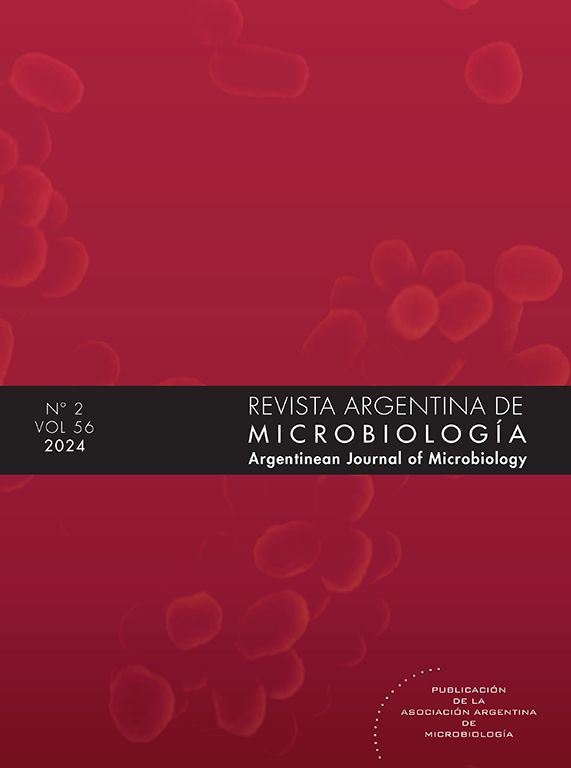Articles in press
Articles in press are accepted, peer reviewed articles that are not yet assigned to volumes/issues, but are citable using DOI. More info
- •
MPXV infection was confirmed in 46.0% of the studied patients, all of them were men.
- •
Varicella-zoster virus infection was the most frequent differential diagnosis.
- •
Complete genomes were obtained by a high throughput shotgun metagenomics strategy.
- •
The Argentinian sequences were related to sequences from the USA, Europe, and Peru.
- •
We determine the genotypes MTB belonging to the Beijing lineage.
- •
406 MTB isolates were genotyped with Spoligotyping and 18-locus MIRU-VNTR.
- •
Beijing genotype characterized phylogenetically.
- •
Genomic diversity of MTB in Monterrey, Mexico.
- •
We studied 33 blood samples from bats from Misiones (Argentina).
- •
Bartonella spp. were found on Artibeus lituratus, Desmodus rotundus, Carollia perspicillata, and Myotis nigricans.
- •
Phylogenetic analysis shows seven genotypes of Bartonella.
- •
First S. sonnei isolates report with blaCTX-M-15 in Peru.
- •
blaCTX-M-15 associated with qnrS1, presumably in a conjugative plasmid of the IncI-γ group; in both cases azithromycin susceptible.
- •
Clonal expansion of sublinage IIIa and IIIb in Latin America.
- •
Clones circulantes de L. monocytogenes con distintos grados de virulencia en Argentina.
- •
Predominio del clon hipervirulento CC1 en muestras de humanos y alimentos.
- •
Identificación de aislamientos con elevada y posible relación epidemiológica.
- •
Arthrobacter sp. UMCV2 functions as a rhizobia-helper-bacteria.
- •
New S. medicae strains produce effective nodulation in M. truncatula Jemalong A17.
- •
The signal molecule dimethylhexadecilamine enhances M. truncatula nodulation by S. medicae.
- •
Bifidobacterium choladohabitans integra la microbiota intestinal de A. mellifera.
- •
E. faecium compone la microbiota del pan de abejas en colonias de A. mellifera.
- •
E. faecium integra el núcleo bacteriano estable de las colonias de abejas melíferas.
- •
No hay antagonismo cruzado entre bacterias aisladas de intestino y pan de abejas.
- •
Pseudomycetoma is a rare chronic granulomatous reaction that surrounds fungal hyphae.
- •
Mycobacterium genavense does not grow on conventional solid and liquid media.
- •
Severely immunosuppressed patients may present co-infections.





